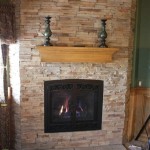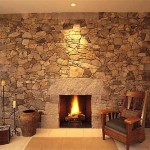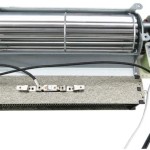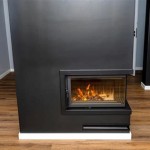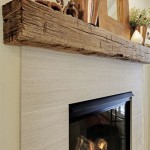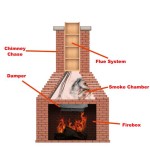Electric Fireplace Mantels: Style and Functionality Without the Insert
Electric fireplace mantels offer a versatile and aesthetically pleasing solution for adding warmth and visual appeal to a living space. Unlike traditional fireplaces, these mantels are designed to house an electric fireplace insert. However, a growing trend involves utilizing mantels without the insert, focusing solely on their decorative capabilities and functional storage. This approach allows homeowners to enjoy the visual benefits of a fireplace mantel without the commitment and considerations associated with an electric fireplace unit itself.
The allure of electric fireplace mantels often stems from their ability to serve as focal points within a room. They provide a visual anchor, drawing the eye and creating a sense of structure and elegance. Choosing to utilize a mantel without an insert opens up a wider range of design possibilities, allowing for creative repurposing and customized decor. This article will delve into the various aspects of electric fireplace mantels sans inserts, exploring their design options, functional uses, and considerations for installation and maintenance.
The selection of an electric fireplace mantel without an insert hinges on several crucial factors. Room size and layout play a central role, influencing the ideal dimensions and style of the mantel. The existing décor and architectural features of the space must also be considered to ensure seamless integration. Furthermore, the intended function of the mantel, whether purely decorative or designed for storage, will dictate the optimal design and construction.
Material choice is another significant element. Wood, typically in various forms like solid wood, MDF (Medium-Density Fiberboard), or wood veneer, is a popular option due to its versatility and aesthetic appeal. Wood mantels can be stained, painted, or left natural to complement any interior design scheme. Stone or faux stone mantels offer a more rustic or contemporary aesthetic, adding a touch of grandeur and durability. Metal mantels, often constructed from wrought iron or stainless steel, provide a sleek and modern look, ideal for minimalist spaces.
The style of the mantel should align with the overall design theme of the room. Traditional mantels often feature intricate carvings, ornate details, and classic silhouettes. Contemporary mantels embrace clean lines, minimalist designs, and simple geometric shapes. Rustic mantels typically incorporate natural materials, distressed finishes, and rugged textures. Transitional mantels bridge the gap between traditional and contemporary styles, blending classic elements with modern sensibilities.
Design and Aesthetic Considerations
When foregoing the electric insert, the design possibilities for the mantel become remarkably diverse. The open cavity where the insert would typically reside can be creatively utilized in several ways. One common approach is to create a decorative display area. This might involve arranging candles, vases, artwork, or other decorative objects within the space. The depth of the cavity, along with the color and texture of the back panel, can be carefully chosen to enhance the visual impact of the display.
Another popular option is to transform the cavity into a storage niche. Shelves can be installed within the space to create a functional storage area for books, magazines, or other household items. Baskets or decorative boxes can be used to conceal clutter and maintain a neat appearance. This approach is particularly useful in smaller living spaces where storage is at a premium.
For a more dramatic effect, consider incorporating lighting into the mantel design. Recessed lighting can be installed to illuminate the display area, highlighting the decorative objects and creating a warm and inviting ambiance. LED strip lights can be added along the inside edges of the mantel to create a soft glow that accentuates the architectural details. Backlighting can also be used to create a floating effect, adding a touch of sophistication to the design.
The surrounding wall space also plays a crucial role in the overall aesthetic of the mantel. Painting the wall behind the mantel a contrasting color can create a striking focal point. Adding a textured wall covering, such as wallpaper or stone veneer, can further enhance the visual appeal. Mirrors can be strategically placed to reflect light and create the illusion of more space. Artwork or photographs can be hung above the mantel to add personality and visual interest.
Consider the scale and proportion of the mantel in relation to the room. A mantel that is too large or too small can disrupt the balance of the space. The height of the mantel should be proportionate to the ceiling height, and the width should be appropriate for the size of the wall. Ensure that the mantel is positioned at a comfortable viewing height, taking into account the height of the furniture in the room.
Functional Uses and Repurposing
Beyond its decorative appeal, an electric fireplace mantel without an insert can serve several practical functions. As mentioned previously, the cavity can be repurposed as a storage niche, providing valuable space for organizing and storing various items. This is particularly beneficial in apartments or smaller homes where maximizing storage space is essential.
The mantel itself can also be utilized as a display surface. The top of the mantel provides a perfect spot for showcasing photographs, artwork, or decorative objects. Adding a few carefully chosen items can personalize the space and reflect the homeowner's individual style. The mantel can also serve as a convenient place to set down drinks, books, or other items while relaxing in the living room.
Another innovative use for the mantel is to integrate it into a home entertainment system. The cavity can be used to house a soundbar, gaming console, or other electronic devices. Cables can be neatly concealed behind the mantel to maintain a clean and organized appearance. This approach allows you to create a seamless and stylish entertainment center without sacrificing valuable floor space.
In some cases, homeowners may choose to repurpose an existing fireplace mantel after removing a traditional fireplace or an electric insert. This can be a cost-effective way to update the look of a room without purchasing a new mantel. The existing mantel can be refinished, repainted, or modified to suit the new design scheme. This approach also allows you to retain the character and charm of the original fireplace.
When repurposing a mantel, it's crucial to carefully inspect its structural integrity. Ensure that the mantel is securely attached to the wall and that there are no signs of damage or decay. If necessary, reinforce the mantel with additional supports to ensure its stability. Also, consider the size and shape of the cavity and whether it will accommodate the intended use. Modifications may be required to create the desired functionality.
Installation and Maintenance Considerations
The installation process for an electric fireplace mantel without an insert is generally straightforward, especially if the mantel is designed to be freestanding or wall-mounted. However, it's crucial to follow the manufacturer's instructions carefully to ensure a safe and secure installation. If you're not comfortable with DIY projects, consider hiring a professional installer.
Before installation, carefully measure the available space and determine the optimal location for the mantel. Ensure that the wall is sturdy and capable of supporting the weight of the mantel. Locate any electrical wiring or plumbing behind the wall to avoid accidental damage. Use a level to ensure that the mantel is installed straight and even.
For wall-mounted mantels, use appropriate hardware and anchors to secure the mantel to the wall studs. If the wall is made of drywall, use drywall anchors that are rated for the weight of the mantel. Ensure that the screws are long enough to penetrate the wall studs and provide a secure hold. For freestanding mantels, ensure that the base is stable and even. Use shims if necessary to level the mantel on uneven floors.
Maintenance requirements for an electric fireplace mantel without an insert are relatively minimal. Regularly dust the mantel with a soft cloth to remove any accumulated dirt or debris. Avoid using harsh chemicals or abrasive cleaners, as these can damage the finish. For wood mantels, occasionally apply a furniture polish to maintain the luster and protect the wood from drying out. For stone or metal mantels, use a cleaner specifically designed for those materials. Avoid placing heavy objects on the mantel that could potentially damage or scratch the surface.
Periodically inspect the mantel for any signs of damage, such as cracks, chips, or loose joints. Address any issues promptly to prevent further deterioration. If the mantel is painted, touch up any scratches or chips with matching paint. If the mantel is stained, apply a matching stain to conceal any blemishes. Consider applying a protective sealant to the mantel to prevent moisture damage and enhance its durability.

Bridgevine Home 48 Inch Fireplace With Mantel No Assembly Required Jasmine Whitewash And Barnwood Finish Com

Diy Shiplap Electric Fireplace Build With Mantel Healthy Grocery Girl

How To Build A Diy Fireplace Surround For Your Electric Insert Hand Treated Home

Electric Fireplaces Tv Stand Mantel Linear Wall Mount Dimplex

ᑕ❶ᑐ How High Should A Mantel Be Above An Electric Fireplace

Sofia Cambridge 57 In Modern Indoor Electric Fireplace Mantel With 1500w Log Insert And Remote Control White Faux Marble Heating For Living Room Dining Bedrooms Up To 210 Sq Ft Com

Amerlife Electric Fireplace With Mantel 44 Laminate Finish Tv Stand 23 Insert Heater Combination Rustic Console Table For Tvs Up To 50 Great Living Room Com

Stylewell Fallston 45 In W Wall Mantel Infrared Electric Fireplace White 150922 The Home Depot

Electric Fireplace Mantle Diy She Holds Dearly

Concerto 1500w 60 Inch Electric Fireplace Insert With Eton White Mantel Suite Moda Living
Related Posts


